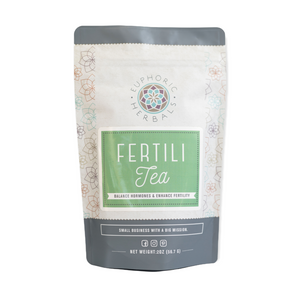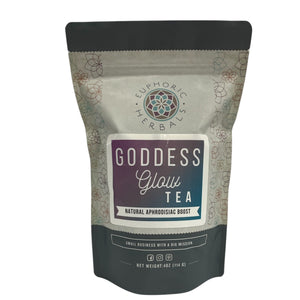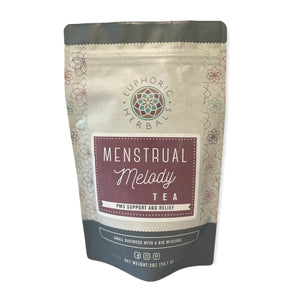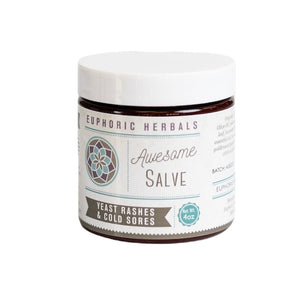Using herbs and holistic techniques to keep or regain health is an ancient practice. And while there are hundreds of holistic traditions around the world each unique to its own region, there are three main systems that have stood the test of time: Western herbalism, Ayurvedic medicine, and traditional Chinese medicine (TCM).
This article is all about Ayurveda-- one of the most ancient systems of holistic healing that we know of.
It would take books to go into all the details of Ayurveda and the principles it teaches, but this is meant as an introduction to the system, how it approaches health, and key Ayurvedic herbs you can use in your own life.
If you find yourself wanting more at the end, there are many ways to explore further on your own!
What is Ayurveda? + Where it Originated
Ayurveda is believed to have originated in India over 5000 years ago, making it quite possibly the oldest healing tradition that still exists today.
Though you'll often hear it called by the synonym of 'Ayuverdic medicine', Ayurveda is the original term taken from two Sanskrit words: ayuh and veda. These two words combined translate roughly to "sacred knowledge of life" or "science of life/longevity".
During the Vedic period of Indian history, Ayurveda was a sister science to yoga. The teachings of both were widely taught until India went through a turbulent time that involved multiple invading countries.
Some of the most ancient Ayurvedic teachings have since been lost, but the core tradition was kept alive by dedicated practitioners in India. Eventually, Ayurveda was brought to the attention of the wider world, particularly during the New Age movement in the west.
Today, more people are familiar with Ayurveda than ever before and are drawn to its unique approach to health and wellness.
How Ayurveda Approaches Health
Ayurveda has a lofty definition of health: a state in which mind, body, soul, and senses are balanced and acting together to promote a feeling of wellness or bliss.
Most (if not all) of us don't find ourselves in such a place, so how does Ayurveda help us to get closer to it?
The Three Doshas

Getting healthier starts with understanding yourself better or, more specifically, your constitution. Ayurveda outlines three doshas (constitutions) that still go by their Sanskrit names of vata, pitta, and kapha.
It's important to keep in mind that all three doshas are present in everyone to some degree, but one or two are dominant, giving you your main Ayurvedic constitution.
Here's a brief overview of each one:
- Vata- Vata is associated with air and ether. Those with this dosha tend toward creativity, flexibility, and movement. A vata dosha or imbalance often involves qualities that are dry, light, cold, rough, or clear.
- Pitta- Pitta is associated with fire and water. Those with this dosha tend toward intelligence, ambition, and charisma. A pitta dosha or imbalance often involves qualities that are hot, liquid, light, or oily.
- Kapha- Kapha is associated with water and earth. Those with this dosha tend toward calmness, compassion, and contentment. A kapha dosha or imbalance often involves qualities that are heavy, cool, slow, oily, or sticky.
If one of these doshas is dominant in you, you can consider yourself a 'vata type', 'pitta type', etc. However, it's also possible for two doshas to dominate, as in a vata-kapha type, kapha-pitta type, or pitta-vata type.
More rarely, someone can be tridoshic, meaning all three doshas are equally present.
Elements and Qualities
Now that you know more about the three doshas, there are two other categories that will help you understand the Ayurvedic approach: elements and qualities.
The elements you should already recognize from the doshas:
- Earth
- Water
- Fire
- Air
- Ether (Space)
These elements are considered to be the fundamental building blocks of nature. Like the doshas, every substance contains varying amounts of all five, but typically one or two elements are dominant.
Along with the five elements, Ayurveda identifies 20 different qualities that are grouped into 10 pairs of opposites. These qualities are helpful to both describe imbalances or symptoms within the body and to describe substances that may help or aggravate a condition.
Here's a look at all 20 qualities listed in their opposite pairs:
- Heavy vs. Light
- Hot vs. Cold
- Oily vs. Dry
- Slow (Dull) vs. Sharp (Penetrating)
- Soft vs. Hard
- Smooth vs. Rough
- Dense vs. Liquid
- Stable vs. Mobile
- Gross vs. Subtle
- Cloudy (Sticky) vs. Clear
Imbalances

According to Ayurveda, balance and order lead to health. The goal of wellness is to identify excesses and deficiencies that lead to imbalance(s) within the body and either eliminate or minimize them.
This is where it's very important to recognize the difference between your constitution (dosha) and an imbalance.
Your constitution (vata, pitta, kapha, etc.) is your natural state of balance. Each dosha does have certain characteristics that can go too far in a particular direction, but you want to reach a state where your dosha is managed and "shines".
Imbalances are also related to the three doshas, but they can change frequently throughout different seasons of life. You want to eliminate or minimize these imbalances with the goal of returning to equilibrium.
To give you an example, let's say you have a vata constitution.
During one season of life, you may be dealing with a vata imbalance, which your specific constitution is prone to. This could mean physical signs like dry skin and poor circulation or emotional signs like fear and anxiety.
During a different season of life, you may find yourself dealing with a pitta imbalance, frequently feeling 'hot' and angry or noticing physical signs like inflammation, rashes, and heartburn. Despite this pitta imbalance, you still have a vata constitution, even though it may not seem dominant at the moment.
What all this means is that you can follow Ayurvedic principles to accomplish two main goals: Manage your constitution (dosha) so it doesn't swing too far in one direction and address specific imbalances to regain equilibrium.
Key Practices in Ayurveda to Regain Balance
If you are able to identify your dosha and one or more current imbalances, what does Ayurveda offer to restore balance and health?
Again, there is much more to Ayurveda than can be discussed in an introduction, but one of the main principles to mention is that opposites balance.
Let's go back to the pitta imbalance, which involves signs like heat, inflammation, anger, jealousy, heartburn, loose stools, and rashes. To address this type of imbalance, you would want to look for substances (like herbs and foods) or practices with the opposite qualities: cool, slow, dense, stable, etc.
Or if you simply want to work on managing your core constitution, you can look for practices and substances that have opposite qualities to your dosha and include them in your daily routine.
Key Ayurvedic Herbs

Ayurveda has many ways to restore balance and health, including exercise, daily routines, diet and food combining, cleansing practices, and a focus on prevention.
However, many people are especially interested in Ayurvedic herbs, which are very powerful and restorative.
Here's a look at some of the most frequently used Ayurvedic herbs and their main actions:
- Triphala- Formula of amla, bibhitaki, and haritaki used for digestive health.
- Ashwagandha- Adaptogenic herb that helps with stress, sleep, and energy.
- Turmeric- Frequently cooked with and known to calm inflammation.
- Boswellia- Also known as Indian frankincense and used for rejuvenation and mental clarity.
- Gotu kola- Highly valued mental rejuvenative.
- Bacopa- Supportive of mind, memory, and concentration.
- Shatavari- Used as a tonic for the female reproductive system and to support digestive health.
- Tulsi (Holy Basil)- A revered adaptogen for mind, body, and spirit.
Going Deeper into Ayurveda
Hopefully, by now you have a better understanding of what Ayurveda is all about. And the good news is that if you want to go deeper, there are many more resources available today than there would have been a few decades ago.
Whether you want to read a book, take a course, or listen to someone teach, there are options out there for pursuing an interest in Ayurvedic medicine. Or if you don't want to do the learning yourself, you can search for an Ayurvedic practitioner to help you in your health journey.
Disclaimer: This post is for informational purposes only. It does not constitute medical advice and should not be substituted for medical advice. Please consult your health care provider, herbalist, midwife, or naturopathic physician before taking herbs, supplements, etc. Here's the link to our full disclaimer.














































































































































































